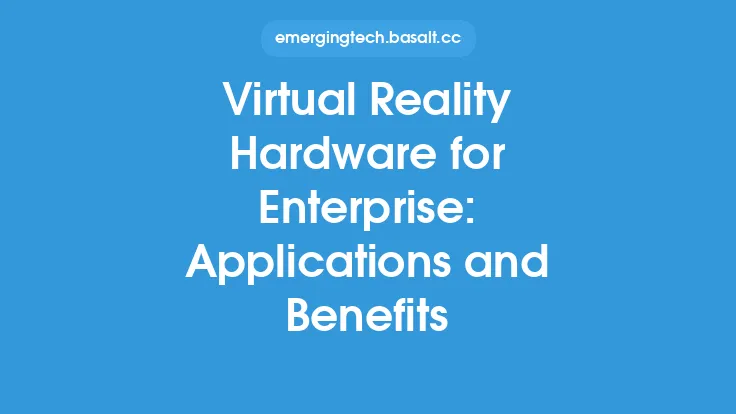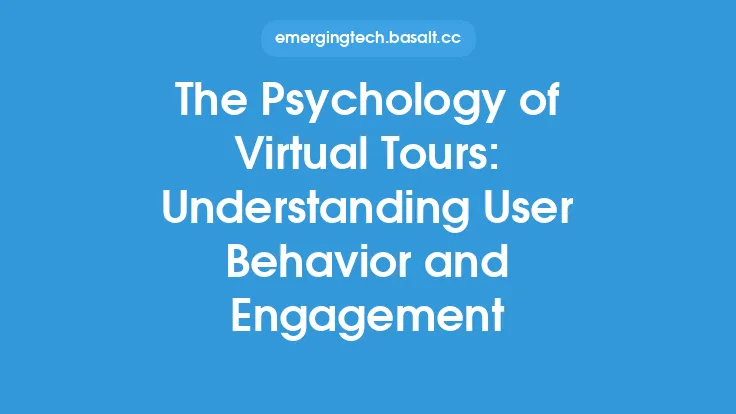The use of virtual tours in education has become increasingly popular in recent years, and for good reason. These interactive and immersive experiences have been shown to enhance student engagement and learning, making them a valuable tool for educators. By providing students with the ability to explore and interact with virtual environments, virtual tours can help to increase motivation, improve understanding, and promote deeper learning.
What are Virtual Tours?
Virtual tours are interactive, digital representations of physical environments, such as museums, historical sites, or even entire cities. They are typically created using 360-degree photography or video, and can be accessed through a variety of devices, including computers, tablets, and smartphones. Virtual tours can be used to provide students with a virtual field trip experience, allowing them to explore and learn about different places and subjects in a highly engaging and interactive way.
Benefits of Virtual Tours for Education
The benefits of virtual tours for education are numerous. For one, they provide students with access to a wide range of learning environments and experiences that may not be possible in a traditional classroom setting. Virtual tours can also help to increase student engagement and motivation, as they provide a highly interactive and immersive learning experience. Additionally, virtual tours can be used to support a variety of learning styles, including visual, auditory, and kinesthetic learning.
Technical Requirements for Virtual Tours
In order to create and deliver virtual tours, a number of technical requirements must be met. These include the use of high-quality cameras and photography equipment, as well as specialized software for creating and editing the virtual tour. Additionally, virtual tours require a robust and reliable internet connection, as well as a device with sufficient processing power and memory to handle the demands of the virtual tour. Some of the key technologies used in virtual tours include:
- 360-degree photography and video
- Virtual reality (VR) and augmented reality (AR) technologies
- HTML5 and JavaScript for creating interactive web-based experiences
- Mobile apps and devices for accessing virtual tours on-the-go
Creating Effective Virtual Tours for Education
In order to create effective virtual tours for education, a number of key considerations must be taken into account. These include the learning objectives and outcomes of the virtual tour, as well as the needs and abilities of the students who will be using it. Virtual tours should be designed to be highly interactive and engaging, with features such as hotspots, quizzes, and games to promote student participation and learning. Additionally, virtual tours should be accessible on a variety of devices, including computers, tablets, and smartphones.
Best Practices for Implementing Virtual Tours in the Classroom
In order to get the most out of virtual tours in the classroom, a number of best practices should be followed. These include:
- Aligning virtual tours with learning objectives and outcomes
- Providing clear instructions and guidance for students
- Encouraging student participation and interaction
- Using virtual tours to support a variety of learning styles
- Evaluating the effectiveness of virtual tours and making adjustments as needed
Examples of Virtual Tours in Education
There are many examples of virtual tours being used in education, including:
- Virtual field trips to museums and historical sites
- Interactive 3D models of the human body and other complex systems
- Virtual tours of different countries and cultures
- Interactive simulations of scientific experiments and phenomena
- Virtual reality experiences for training and professional development
Conclusion
Virtual tours have the potential to revolutionize the way we learn, by providing highly interactive and immersive experiences that can increase student engagement and motivation. By understanding the benefits and technical requirements of virtual tours, educators can create effective and engaging virtual tours that support a variety of learning styles and objectives. Whether used in the classroom or as a supplement to traditional learning, virtual tours are a powerful tool for enhancing student learning and achievement.





